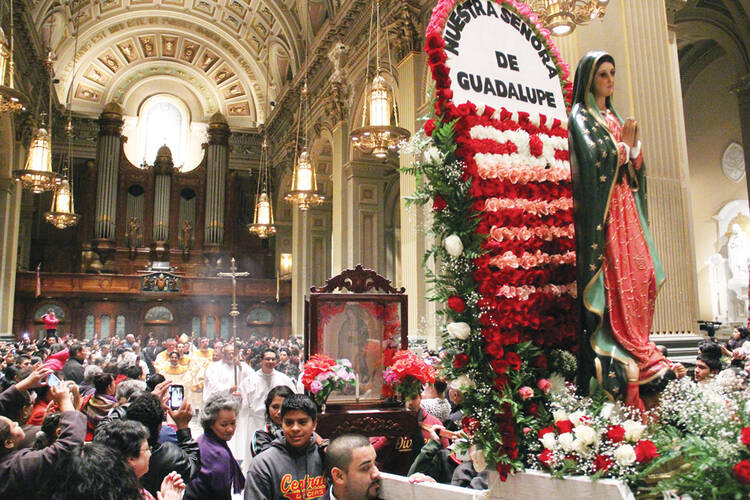The percentage of multicultural parishes in the United States is on the increase, according to research by the Georgetown University-based Center for Applied Research in the Apostolate (C.A.R.A.). C.A.R.A. estimates there are approximately 6,700 multicultural parishes in the United States, many located in the South and West. The Official Catholic Directory lists more than 17,400 parishes in the country.
Membership of Hispanics in the Catholic Church is growing, reaching 38 percent, according to the report, though Non-Hispanic whites are still the majority at 54 percent of the national Catholic population. The report found that some 29.7 million U.S. residents who self-identify as Hispanic or Latino are estimated to be Catholic, representing about 59 percent of the 50.5 million Hispanic people in the United States. C.A.R.A. reports that 40 percent of all growth in parishioners in U.S. parishes from 2005 to 2010 was among Hispanics and Latinos.
According to the study, 4 percent of all parishes celebrate Masses in three or more different languages (including English) at least once a month. Most of the Masses celebrated in a language other than English are in Spanish (81 percent). About 6 percent of all Masses in the United States are now celebrated in Spanish. Parishes that only celebrate Mass in English are significantly less racially and ethnically diverse than other parishes. On average, 88 percent of parishioners in these parishes are non-Hispanic white and no other average for any other race or ethnicity group attains 5 percent within them.
Nationally, CARA estimates that:
• Approximately 42.5 million U.S. residents who self-identify as non-Hispanic white are Catholic, which represents 22 percent of people in the nation of this race and ethnicity.
• Approximately 3.6 million U.S. residents who self-identify as Asian, Native Hawaiian or Pacific Islander are estimated to be Catholic, representing about 20 percent of this race and ethnicity in this country.
• Approximately 2.9 million U.S. residents who self-identify as black, African American, African or Afro-Caribbean are estimated to be Catholic, representing about 8 percent of the 38.9 million people of this race and ethnicity in the United States.
• Some 535,500 U.S. residents who self-identify as American Indian or Alaskan Native are estimated to be Catholic, representing about 18 percent of the 2.9 million people of this race and ethnicity in this country.
C.A.R.A.’s research on multicultural parishes has found these to be, on average, larger than parishes in general. Multicultural parishes average 1,445 registered households, compared to 1,168 for parishes in general. Overall, about three in 10 U.S. parishes (29 percent or 5,000) celebrate at least one Mass a month in a language other than English or Latin.
The study asked pastors about changes in their parish from 2005 to 2010. On average nationally, parishes reported fewer non-Hispanic white parishioners in 2010 than they had in 2005, a decline of 1.5 percentage points. On average, pastors reported growth in the number of Hispanic or Latino parishioners (1.3 percentage points) and Asian, Native Hawaiian and other Pacific Islander parishioners (0.5 percentage points) during this period. These trends are even more evident in multicultural parishes.








